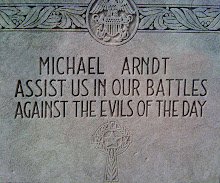
But after all the hullabaloo my recent blog posts on Frank Gehry generated, I have to ask: How green is it?
KAUST is the first to achieve a Leadership in Energy and Environmental Design imprimatur in Saudi Arabia. (Interestingly, it’s also the kingdom’s first coed university campus.) The 6.5 million-sq.-ft. development, which encompasses 26 buildings on over 9,000 acres near Jeddah on the Red Sea, was designed by HOK, one of the world’s top architecture firms. It’s the eighth win for St. Louis-based HOK since the AIA’s Committee on the Environment began handing out awards in 1997.
HOK pats itself on the back for KAUST’s green touches, such as shading walkways and buildings from sunlight, installing wind turbines and 178,325 square feet of solar panels, sourcing 38% of materials within 500 miles of the Saudi port, and creating an infrastructure that reuses all waste water for onsite irrigation and other purposes. Contractors did two other things on the LEED checklist: They recycled 80% of waste materials and used wood that was sustainably harvested.
That’s all well and good, but the fact is that nearly two-thirds of the tens of thousands of tons of materials needed to construct this desert campus—paint, carpeting, furnishings, wood—had to be shipped in from more than 500 miles away. I don’t know how much greenhouse gas those vessels produced, but I do know that ocean freighters emit a lot. Back in 2007, I wrote in BusinessWeek that, based on a study, they produced more carbon dioxide than 10 of the 39 industrialized nations originally included in the Kyoto Protocol. A revised study finds that that’s still the case.
I asked one of the AIA committee members, Liz Ogbu of San Francisco-based Public Architecture, about how far judges should go in assessing environmental impact. She said the committee discussed whether it was right to award a LEED project in such a remote, resourceless, and inhospitable place. But she said it was precisely for that reason that the committee voted for HOK design. “Not every building can be built in California,” she noted. “There is going to be building going on in Saudi Arabia. For that reason, it’s important to have an example that green building is possible.”
I also asked HOK’s Colin Rohlfing the same question. Rohlfing is sustainable design leader in HOK’s Chicago office and was one of the hundreds of HOK employees on the project. “We had a lot of things working against us from the get-go,” he told me. In an ideal world, developers would build in temperate climates. Here, however, designers confronted a climate like Houston’s, except set in a desert, and coral reefs and mangroves that had to be protected.
“It’s always a dilemma,” he said. “Should we develop in those areas? Should we be going after greenfield developments in such a harsh environment? But if we don’t go after them and win them and try to make them as efficient as possible, some other firm will come in. The king was going to build in that location regardless. We had to make the best of it.”
I have to agree. If Saudi Arabia is going to develop as a nation, it does the world a favor by building to LEED standards. Still, I wonder what Frank Gehry would have to say.


No comments:
Post a Comment